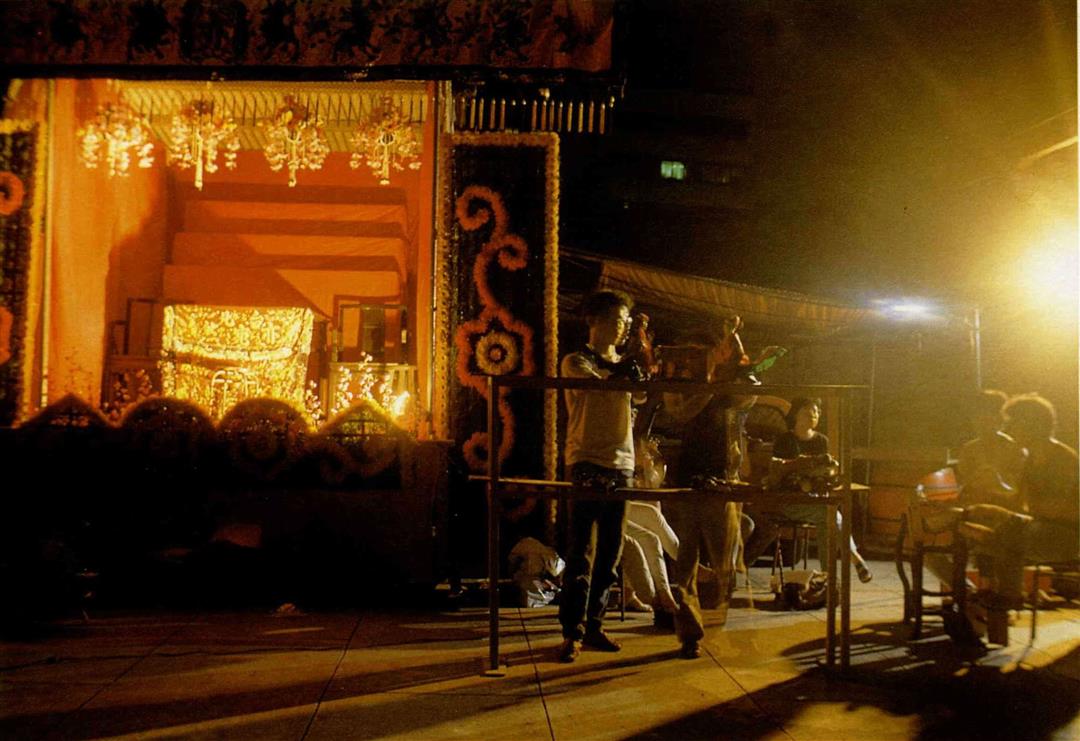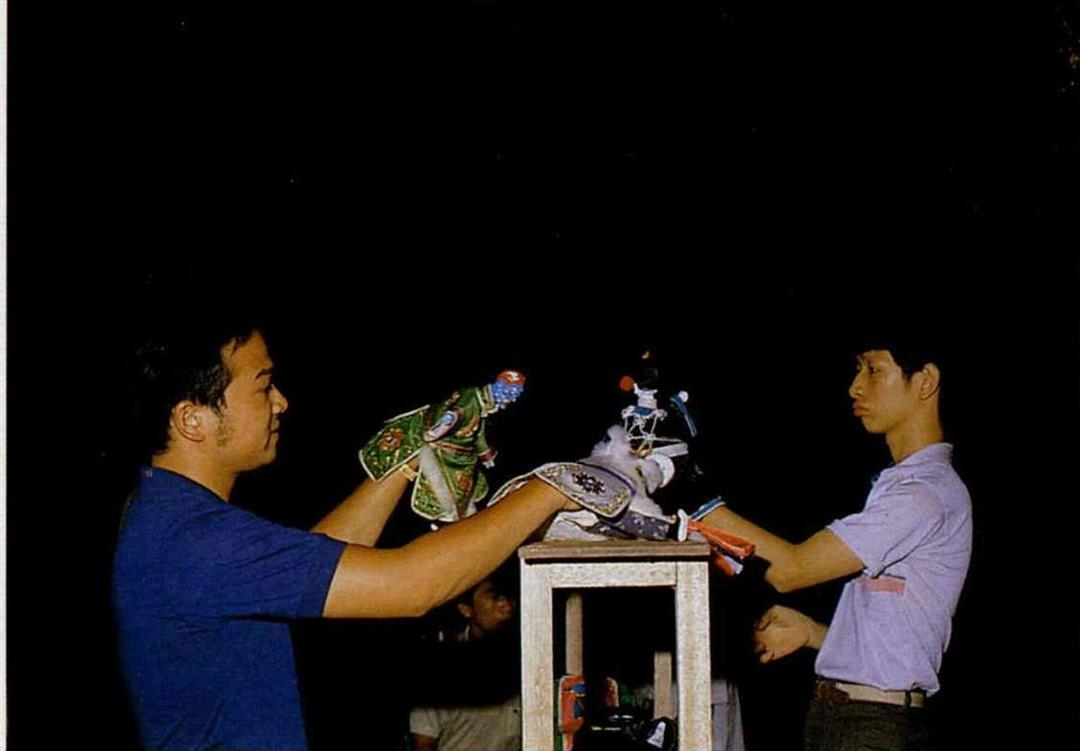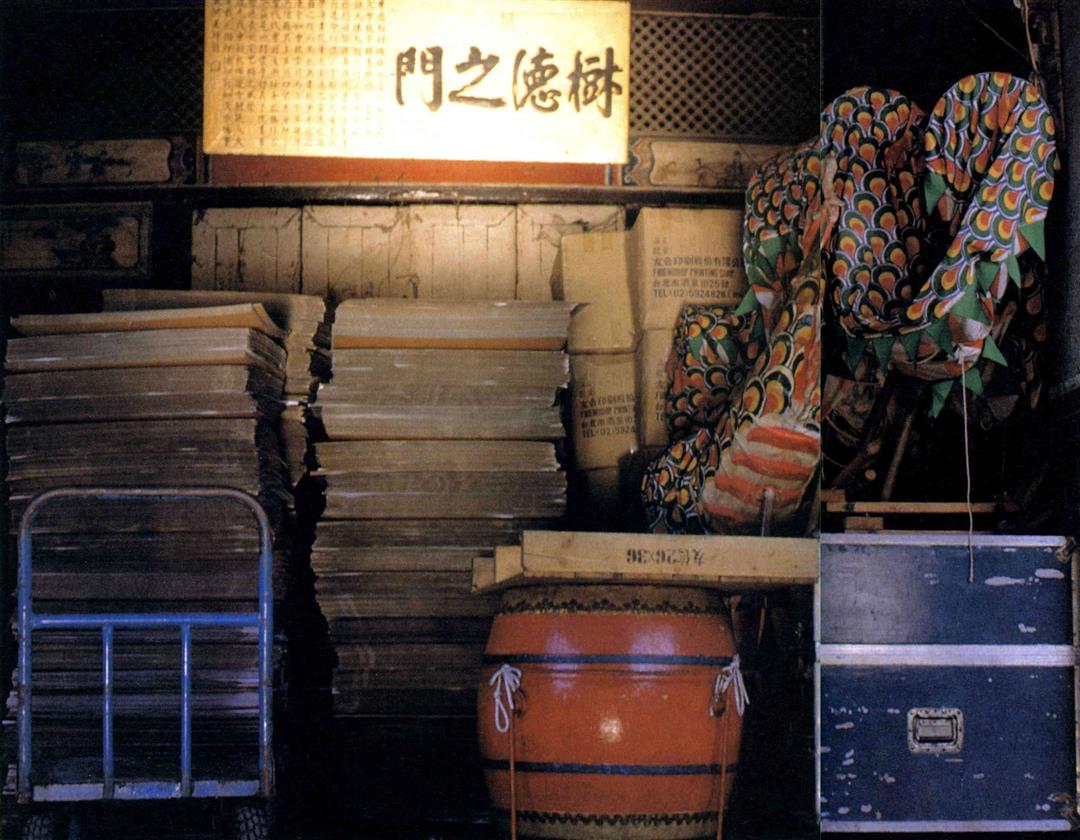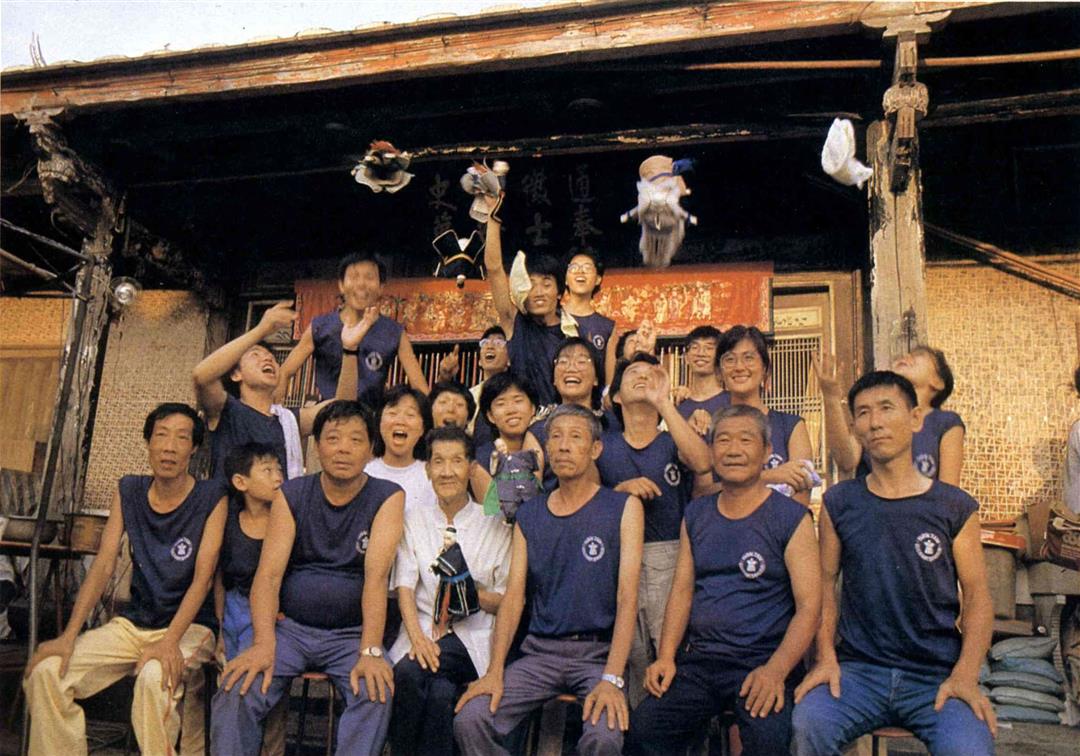Towards the end of July the old Ch'en Yueh-chi structure called Laoshihfu, meaning Teacher's Mansion, in Talungtung suddenly becomes very busy.
Each evening after the lanterns are lit people come in and out of the Laoshihfu. In all the coming and going, the chatter of young students, handsome college students, and even some plain old folk catch the attention of those passing by.
The mansion is famous, not because it's "old," but because it's home to Li Tien-lu, a man who can "relate the events of one thousand years with one word, and conjure up one million soldiers with ten fingers." In the mansion there is an intricately carved old-fashioned stage, and unless there's an important occasion it isn't taken out. When the mansion is hustling and bustling, then you know a big event is about to take place.
There are even more people in the front of the yard. You'll find dancing dragons, people practicing, gongs and drums being beat, and whistles being blown. Each person is busy with his own task.
As a result, not only is almost everyone in the Laoshihfu mobilized, but also even the five- and six-year-old grandsons are beating drums with drumsticks longer than their own arms. Besides this, there are several troupes under Li Tien-lu: Ssu Wan Jan (Li's son Ch'en Hsi-huang he Chung Wan Jan (Chinese Culture University), Wei Wan Jan (Chu Kwang Primary School), Ch'iao Wan Jan (P'ing Teng Primary School), and the Wan Jan training course for young people; all come together to perform. All the activity is very exciting.
A few eight- and nine-year-olds perform with great agility. They are skillful at striking the gong, beating the drums, and bringing the puppets to life with their hands. They take the art of puppetry seriously. On the other hand there is a group of college students nearby who aren't so familiar with things. The master's hands animate the puppets as he speaks. It's almost as if this is a natural gift from heaven. Some masters by Li's side see that a few of the students don't quite understand what's going on as they beat the drums hastily and maintain rhythm.
"Wait a moment! Let me take down some notes," says one of the young students who seem unable to shake the habit of taking notes.
"What do you mean take some notes? If you can't remember it all then take along a tape recorder," says Master Li.
In fact, Master A Lu celebrated his seventieth birthday several years back and is considered to have retired, but his two sons Ch'en Hsi-huang (with the same surname as his mother's) and Li Ch'uan-ts'an are carrying on the tradition of puppetry with the same grandeur. Chinese Culture University's Chung Wan Jan Troupe, the Chu Kwang Wei Wan Jan Troupe, and the P'ing Teng Ch'iao Wan Jan Troupe are all students of his.
Master A Lu has taught many students, many of whom learn the art of puppetry out of sheer interest and only learn a portion of the art. If they were to do it for a profession then they would have to learn all the characters in the Peking Opera such as the role of a villain, a young man, the female role, and a clown. A single person is responsible for playing all the roles.
"Wang Yeh Hui" is a type of "Shen Ming Hui" or "community of worshippers" at an early period on Taiwan. It was common among the various Pu Tai Hsi (a kind of puppet show typical on Taiwan featuring figures of tiny sacks topped with painted heads and manipulated with hands and fingers) troupes and has more than one hundred years of history behind it. The Shen Ming Hui was created by a group of people who believe in the same god. Each year a person is chosen as host and the god is placed in his house for the believers to worship. Another host is chosen the following year. On the day when the newly chosen host comes to the former host's dwelling to escort the god, abundant sacrificial items are prepared and various activities are carried out in order to entertain the god.
In Fukien and on Taiwan the members of the Pu Tai Hsi make offerings to Nobleman Hsi Ch'in and General T'ien Tu. The changing of the host (which is known as the Wang Yeh Hui) must take place on the birthday of Nobleman Hsi Ch'in (on the 24th day of the sixth month of the lunar calendar) and comes to an end in July.
The last step in the welcoming procession takes place when the god is brought into the Laoshihfu. In the sound of joyful shouts the idol of Nobleman Hsi Ch'in is placed on the stage. Master Li also takes a seat to one side.
Next is the ceremony honoring the master. Li Tien-lu and his wife sit on either side where they view the ceremony of kneeling three times with one's head touching the ground nine times by the young students. After the ceremony is complete the performance gets underway.
[Picture Caption]
I Wan Jan Troupe's colorful and intricate carvings are one of the best on Taiwan.
The apprentices practice into the night in the Laoshihfu before the Wang Yeh Hui.
Students practice on a mock stage.
Master Shun Fa (fourth from right) teaches "back stage." In order to explain the way in which the drums are beat Master A Ming (second from right) gives it all he's got.
Master T'ieh lead a group of students to perform the dragon dance and dragon step in the dark of the night.
The real performance is underway! Isn't this giant dragon worth seeing? (photo by Arthur Cheng)
The children of the Ch'iao Wan Jan play the role of "drama boys" and protect Nobleman Hsi Ch'in along the way. (photo by Arthur Cheng)
The gongs are silent and the giant dragon lies down. The setting sun on the Laoshihfu reflects the characters on this wooden tablet.
There's a great performance-taking place, and I'm the star!
In the ceremony honoring the master, students from the Wan Jan Troupe bow three times to the host, Master A Lu, and his wife.
As close as one big family.

The apprentices practice into the night in the Laoshihfu before the Wang Yeh Hui.

Students practice on a mock stage.

Master Shun Fa (fourth from right) teaches "back stage." In order to explain the way in which the drums are beat Master A Ming (second from right) gives it all he's got.

Master T'ieh lead a group of students to perform the dragon dance and dragon step in the dark of the night.

The real performance is underway! Isn't this giant dragon worth seeing? (photo by Arthur Cheng)

The children of the Ch'iao Wan Jan play the role of "drama boys" and protect Nobleman Hsi Ch'in along the way. (photo by Arthur Cheng)

The gongs are silent and the giant dragon lies down. The setting sun on the Laoshihfu reflects the characters on this wooden tablet.

There's a great performance-taking place, and I'm the star!

In the ceremony honoring the master, students from the Wan Jan Troupe bow three times to the host, Master A Lu, and his wife.

As close as one big family.